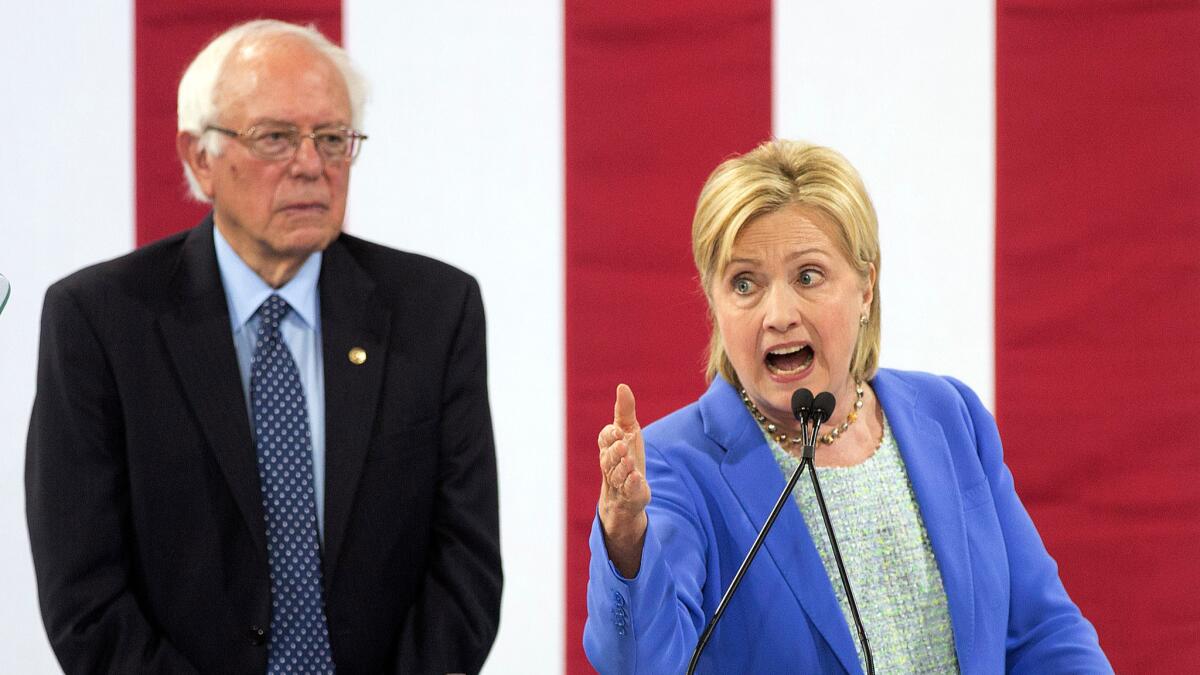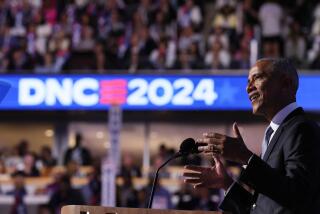Opinion: Democrats want ‘free’ college. It would be nice if they delivered Americans a decent high school education first.

Republicans aren’t the only ones facing disunity in their party as the general election gets fully underway.
The Democratic convention in Philadelphia opens this week amid a chorus of grumbling from Bernie Sanders supporters over Hillary Clinton’s uninspired choice of technocrat Tim Kaine as vice president and leaked emails showing an apparent Democratic National Committee conspiracy to take down Sanders’ campaign.
If there’s hope for party solidarity over the course of the convention it may rest here: Hillary is now a true believer in Bernie’s “free” college education proposal. She came to this faith reluctantly and then only because it was tactically shrewd: Bernie’s followers want free education. Hillary can offer them the promise that she’ll try.
The idea of free college education is seductive. There’s the fact that many Americans aren’t in the financial place they’d like to be, vis-à-vis their progeny’s impending high school graduation and the monumental costs of college tuition. From a social-justice perspective, it’s middle-class and poorer Americans who suffer most where college tuition is concerned. And there’s the wonderfully practical argument that uneducated citizens are less likely to become self-sufficient.
So why not make college “free”?
You’re already familiar with the purely fiscal objection – that “free college” isn’t actually free. Somebody will have to pay for it, and that somebody is everybody who pays taxes. And you’ve likely heard the pedagogical critique – that college and university curricula are antiques that don’t adequately prepare Americans for life in a quick-changing, free-market economy.
But I’m here to say something different: Never mind free college. I’d be ecstatic if Hillary, Bernie and the Democrats pledged to deliver universal high school education.
You’re thinking we’ve already got that. But what we’ve got is nearly universal credentialing.
The dirty little secret in public education is that millions of American kids are conveyor-belted through a system that does not produce math proficiency or English literacy at grade level.
Just look at Los Angeles.
Millions of American kids are conveyor-belted through a system that does not produce math proficiency or English literacy at grade level.
In 2015, the Los Angeles Unified School District claimed a district-wide high school graduation rate of just 72%. That means that more than a fourth of kids who should’ve graduated did not. But far worse is that most of the graduates of many LAUSD high schools don’t meet even basic standards. At David Starr Jordan Senior High, just 18% of all students met the basic English standard and just 6% in math. So how did 64% of students graduate?
The story is much the same at Thomas Jefferson Senior High: 33% English proficiency, 9% in math – and, despite all that bad news, a graduation rate of 62%.
We could go on like this, showing how high schools routinely graduate kids for whom the most imposing barrier to college isn’t tuition. It’s an education that bears no relationship to proficiency. Kids who are mass-produced by this system will generally earn less and die younger than their peers who actually learn.
In any other context, this might be called child abuse.
The problem is union control of education. In a side-by-side study of charter schools and union schools in the same neighborhoods, my colleagues at California Policy Center found charters outscored the union schools in Academic Performance Index, graduation rates and SAT scores. The SAT gap was dramatic, with union high school grads averaging 1299 (placing them at 27% nationally) and charter graduates averaging 1417 (placing them at 41% nationally).
The solution to the disparity isn’t higher spending. Charters are actually cheaper. The same research showed that moving all students into charters would actually save LAUSD more than $3 billion a year – nearly half the district’s current $6.78 billion budget.
Given those distinctions, it’s reasonable to ask how the union system survives. Here, the answer is in fact money: Every year, hundreds of thousands of public school California teachers – teachers who are smart, competent and highly motivated – are required by law to allow union leaders to take hundreds of dollars directly from their paychecks. Unions use that money to support the campaigns of politicians who promise to sign off on the two things that matter most to the union leaders: rising teacher compensation and the union’s total authority over schools.
It’s easy for Bernie – and now Hillary – to talk about free college education. The real challenge would be delivering on the promise of an actual high school education. But declaring that goal would require taking on the union leaders who’ve destroyed public education and who leave generations of kids – mostly poor and working class – on the margins of American society.
Will Swaim is vice president of communications at California Policy Center and former editor of OC Weekly. Researcher Adam Jacobs contributed to this column.
Follow the Opinion section on Twitter @latimesopinion and Facebook
More to Read
A cure for the common opinion
Get thought-provoking perspectives with our weekly newsletter.
You may occasionally receive promotional content from the Los Angeles Times.










